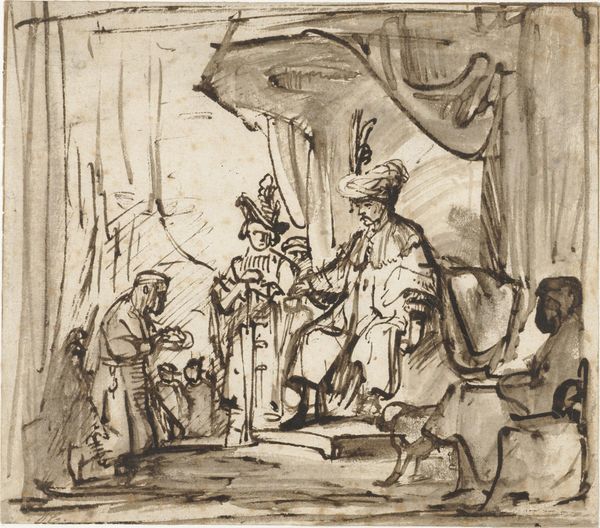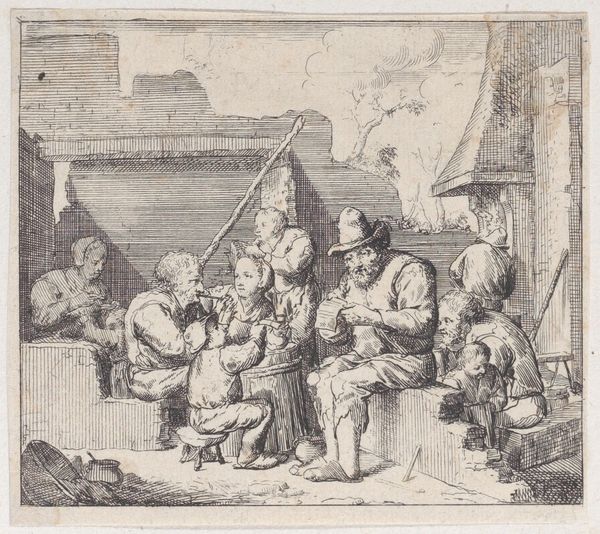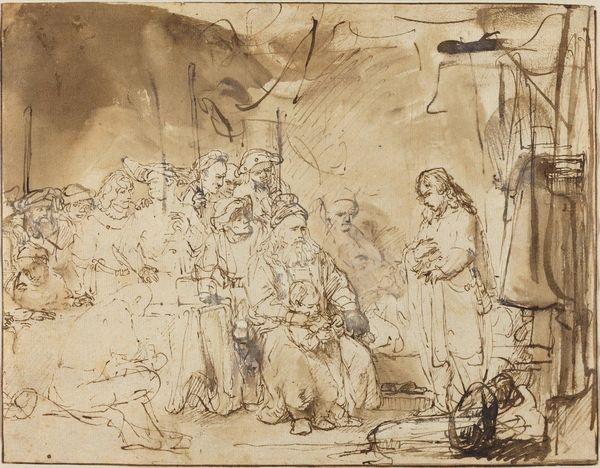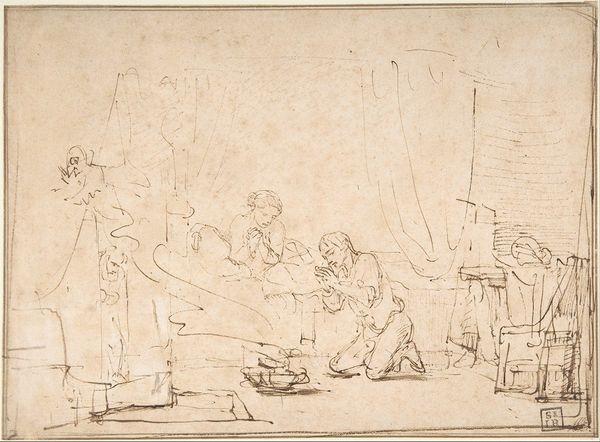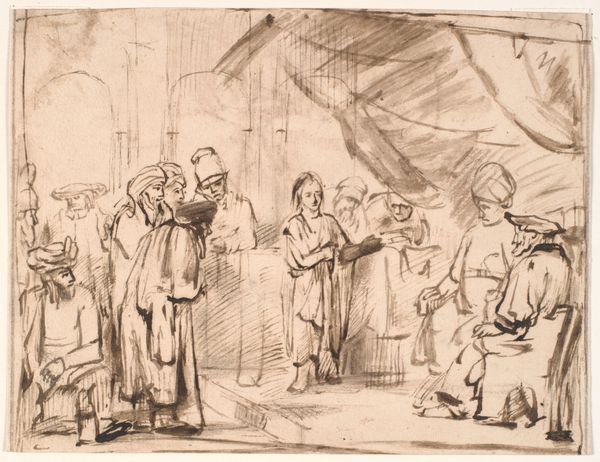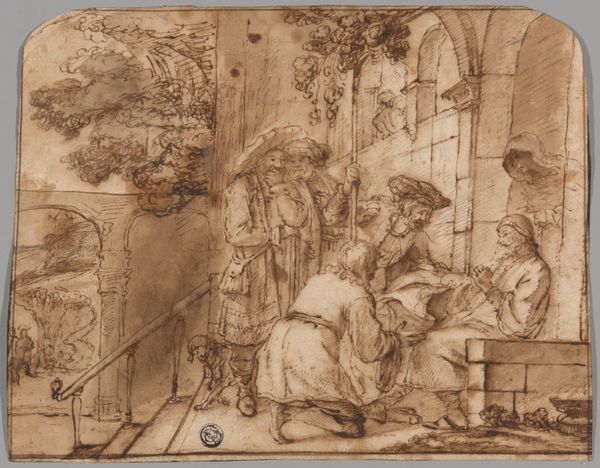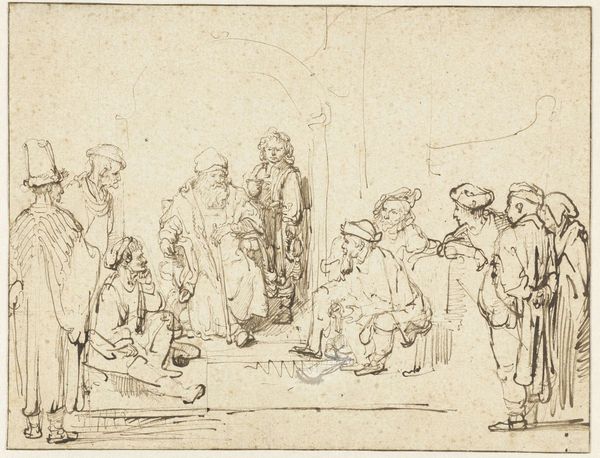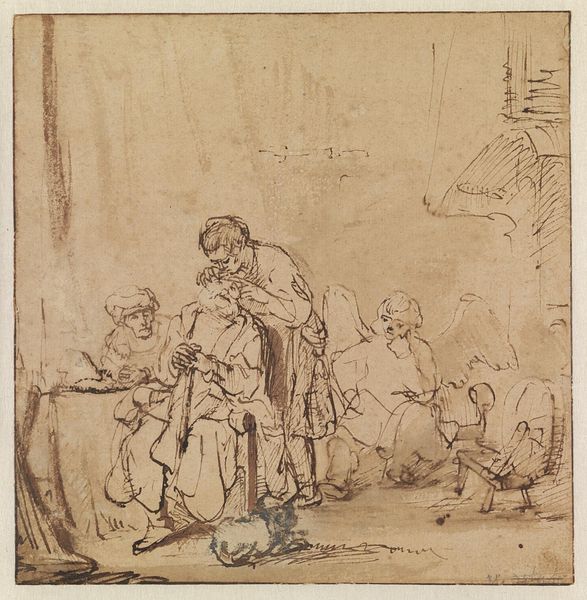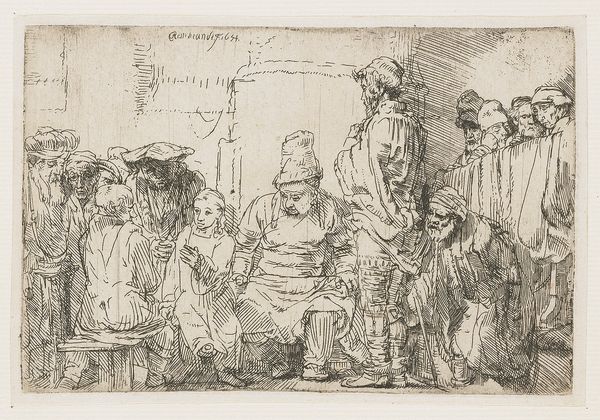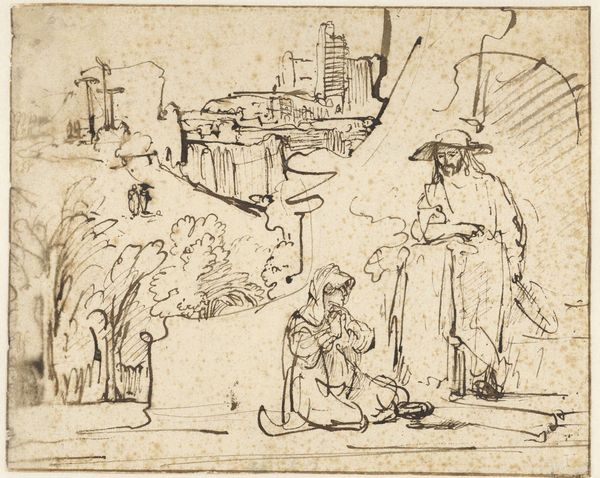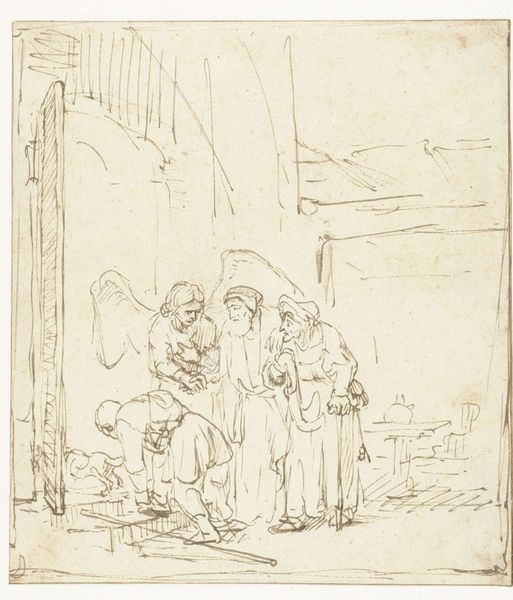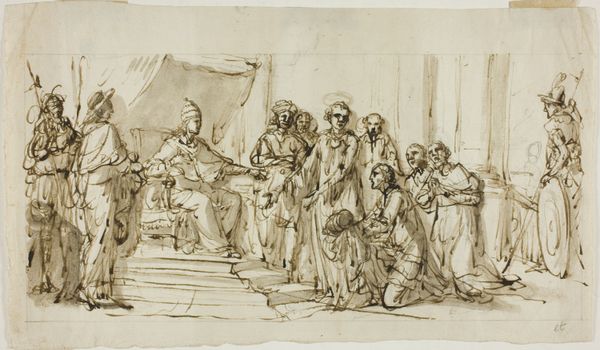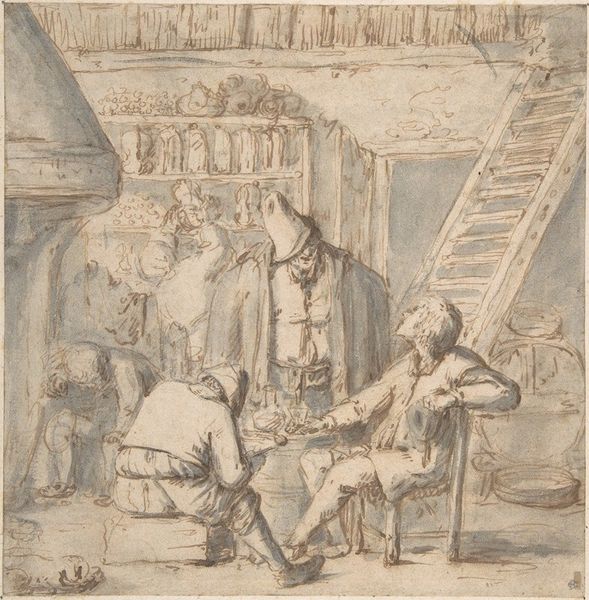
drawing, paper, ink
#
drawing
#
narrative-art
#
baroque
#
paper
#
ink
#
genre-painting
#
history-painting
Dimensions: height 146 mm, width 161 mm
Copyright: Rijks Museum: Open Domain
Curator: Look at the ink on paper, creating what appears to be an underdrawing. It's attributed to an anonymous artist active between 1635 and 1700 and is titled, "Manius Curius Dentatus Refusing the Gifts of the Samnites." Editor: It feels immediately theatrical, almost a stage set with exaggerated gestures. The light seems focused on the central figure, doesn't it? Curator: Precisely! The composition certainly emphasizes Dentatus. The technique itself—the quick, confident lines of ink—speaks to the rapid production demanded in workshops of that era. This piece likely served a preparatory purpose. It tells the story of a Roman hero, who chose virtue over material wealth offered by the Samnites, who were seeking his help. Editor: I notice the careful consideration of weight and balance, it adds drama. See how the kneeling figure echoes the downward slant of Dentatus' pose, while the vertical figures behind him create a counter-movement? I am drawn to the light as well. It strikes the robes and highlights the moral rectitude of the Roman refusal. Curator: Note also the costuming; classical garments indicating historical narrative are here employed in the service of reinforcing certain Roman values for a specific early modern audience, reflecting period social hierarchies through artistic creation. This history-painting reminds the viewer that refusing bribes aligns with an ethical political life and, to put it another way, to do otherwise invites ruin. Editor: So it functions both as art and a form of social commentary. I was particularly struck by how this drawing seems almost complete within itself; each compositional component reinforces a unified visual whole, adding significance to the message. Curator: Exactly! From the cost of ink, paper, and time to the underlying ideology it expresses, a network of resources come into play to produce the art, so it speaks in its visual forms and through economic structures that sustained and made that form. Editor: Yes, thank you. Analyzing it both ways has really changed my view of the artist’s creation.
Comments
No comments
Be the first to comment and join the conversation on the ultimate creative platform.
